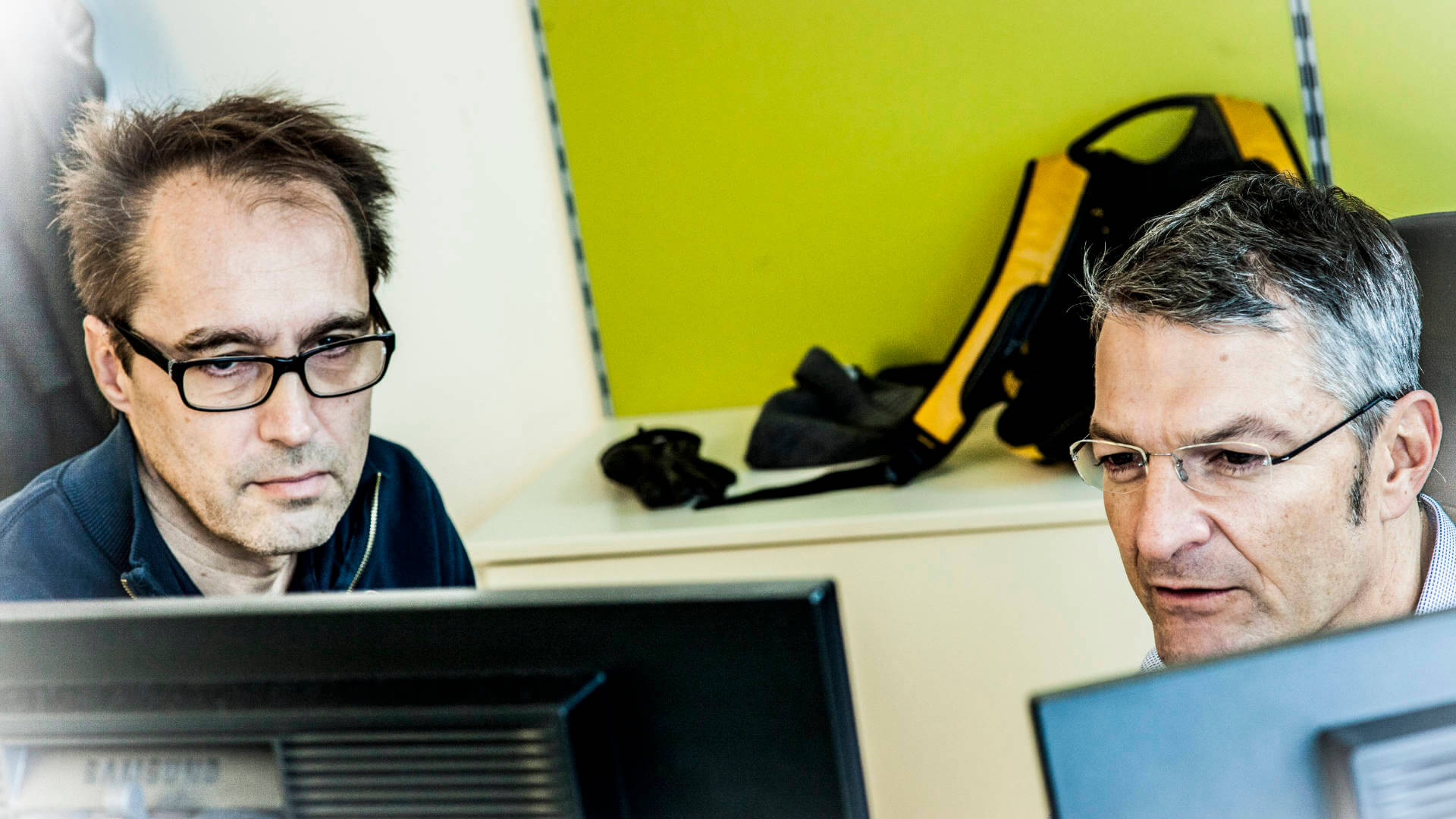30 years of HAKOM, 30 years of Unlimited Time Series Management.
The history of HAKOM, Hasleder & Komornyik OEG.
On December 23, 1991, the history of HAKOM, Hasleder & Komornyik OEG, begins: It is registered in the company register of Vienna. From two diploma theses at the Vienna University of Technology, a 30-year entrepreneurial partnership between Stefan Komornyik and Thomas Hasleder emerged. In 1990, the diploma theses of the company founders developed a mathematical design for power plant optimization for Energieversorgung Niederösterreich. This laid the foundation of the domain know-how of HAKOM Time Series GmbH.
In the 1970s, electricity generation became a social issue for the first time. What seems self-evident today, caught politicians on the wrong foot at the time. The anti-nuclear movement became the initial spark for the political Greens. On November 5, 1978, Austria decided in a referendum against the use of nuclear power. But the last 30 years of the European energy industry have also been exciting.
Let's take a look at the upheavals and the successful journey of HAKOM through an eventful time.
Monopolistic structures – the years 1991 - 2004.
The energy landscape of the early 90s was characterized by monopolistic structures. The focus of HAKOM was therefore on the development of individual software for utilities. It was recognized that HAKOM Time Series Technology could have a much broader benefit for customers if it was opened up. Thus a codebase for Rapid Development was created. This brought a growth spurt for HAKOM.
At the end of the 1990s, the European energy landscape was turned upside down. From 1998, the EU resolutions on the liberalization of the energy industry had to be implemented. Monopolies had to be broken up and producers and networks separated. When the Federal Minister of Economics, Günter Rexrodt, set about drawing up a roadmap for implementation in Germany, the issue was deemed too complex and not feasible.
Time series and forecast data became a key factor to manage the opening of the market in a way that kept networks stable. For HAKOM, a challenging time began. The company was allowed to make the liberalization of the electricity market in Austria a reality together with Energieallianz Austria as of 2000, and together with OMV as of 2001 with regard to natural gas.
In Germany, the second half of the twentieth century heralded a turning point in energy policy: the red-green government under Chancellor Gerhard Schröder initiated Germany's exit from nuclear energy as part of the "Energy Consensus Talks".
A decade of liberalization – the years 2005 - 2015.
For a decade, the liberalization of the energy market occupied Europe. In Germany HAKOM was able to accompany Bayerngas GmbH during this process in 2006. In 2007 the liberalization of the gas market was completed in Germany. This also changed a lot for HAKOM. While the main focus of the company was to make technology more attractive for monopolists, now new facts were created. The company's efforts were now directed towards the development of a standardized time series technology.
And it hit the market. The energy industry was looking for a turn-key solution based on a deep understanding of the energy industry. HAKOM Time Series Technology delivered a standardized process model with implemented forecasting tools. A complex topic of the energy market liberalization were the new balancing groups. HAKOM technology was also successfully implemented for the balancing of the monthly energy quantities distributed in the power grid and the accounting of those balancing groups.
Green Energy – the years 2015 - today.
Technology and business are determined by cycles. The era of the large energy monopolies ended and was replaced by a more agile, technically sophisticated liberalized market. The next cycle is picking up speed. The cycle of renewable energy sources will determine the next period, technologically as well as socio-politically.
The energy world is becoming even more digital. Edge devices are producing data, 5G networks are distributing it almost without latency, local energy communities are emerging, virtual power plants are coming online, and battery power plants are intervening for stabilization. Big data, also in the form of streaming data, is becoming the central topic of the energy transition.
Creating value from this flood of data was and is the central theme for HAKOM. The transformation towards green energy is taking place as we speak. In Europe, the phase-out of coal-fired power generation has been decided. In Austria, it has already been completed in 2020 with the shutdown of the Mellach power plant in Styria. New approaches will be necessary to master the energy transition in terms of data technology.
Vom TSM Manager zur Technologie, Plattform und Cloud.
The history of HAKOM started with a simple time series manager. Features and user experiences, let it become the HAKOM Time Series Technology. The open architecture in terms of databases and data sources, made it the HAKOM Time Series Platform. What comes next?
HAKOM makes a clear announcement: To meet the requirements of the energy transition, the future of the HAKOM Time Series platform lies in the cloud. In a high-performance and elastic cloud solution that will be available and scalable with one click. For large players in the energy industry, as well as for small local energy communities. This future is currently being created in HAKOM's development department and makes HAKOM fit for the next decade.

![[Translate to EN:] [Translate to EN:]](/fileadmin/userdaten/DATEN/BILDER/news/inside/2-jahre-powertsm-azure-cloud.jpg)
![[Translate to EN:] [Translate to EN:]](/fileadmin/userdaten/DATEN/BILDER/news/inside/hakom-liat-episoden-2023.jpg)



